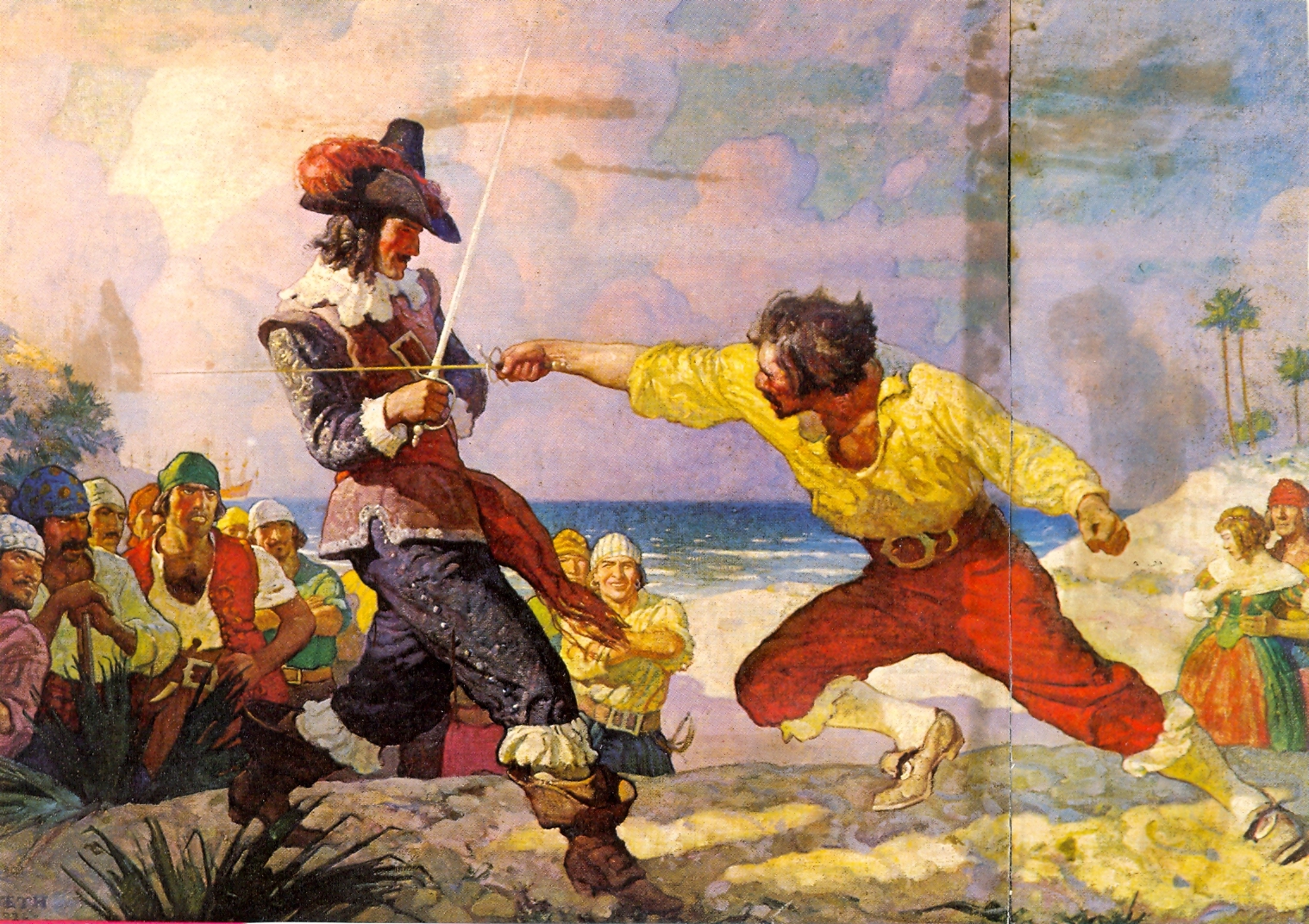|
Everyone
has the above image of sword fighting in mind, or one like it,
when the subject of fencing gets introduced. Perhaps more than
any other sport, fencing brings the field of battle into current
times. Gone are most all of the protective pads used in so many
other sports, for the real bruises sustained in fencing will
not be to the body but to the ego. To sustain a touch is as
if to have been slain. Today's athlete may walk away after a
fencing bout with a loss on his or her record; but that defeat,
in swashbuckling days, would have meant their death. To the
extent that each touch, in practice or in a competitive match,
is considered in this way, is to the extent that a fencer can
know how carefully he or she must face his or her foe in order
to hit without being hit. One can not afford to be cavalier
about death. One can not take a chance on being wrong when one's
own death would be the price of failure. Perhaps the bendable
sword and fancy electronic scoring has further distanced us
from the blood and guts aspects of the fight which modern day
fencing represents and tries to replicate. But, surely no other
sport can put us on the line in front of any one of any size
at any age and demand of us the strictest discipline and the
fastest decision making abilities that we can muster before
we can say and know for a certainty that we are ready for anything. |
